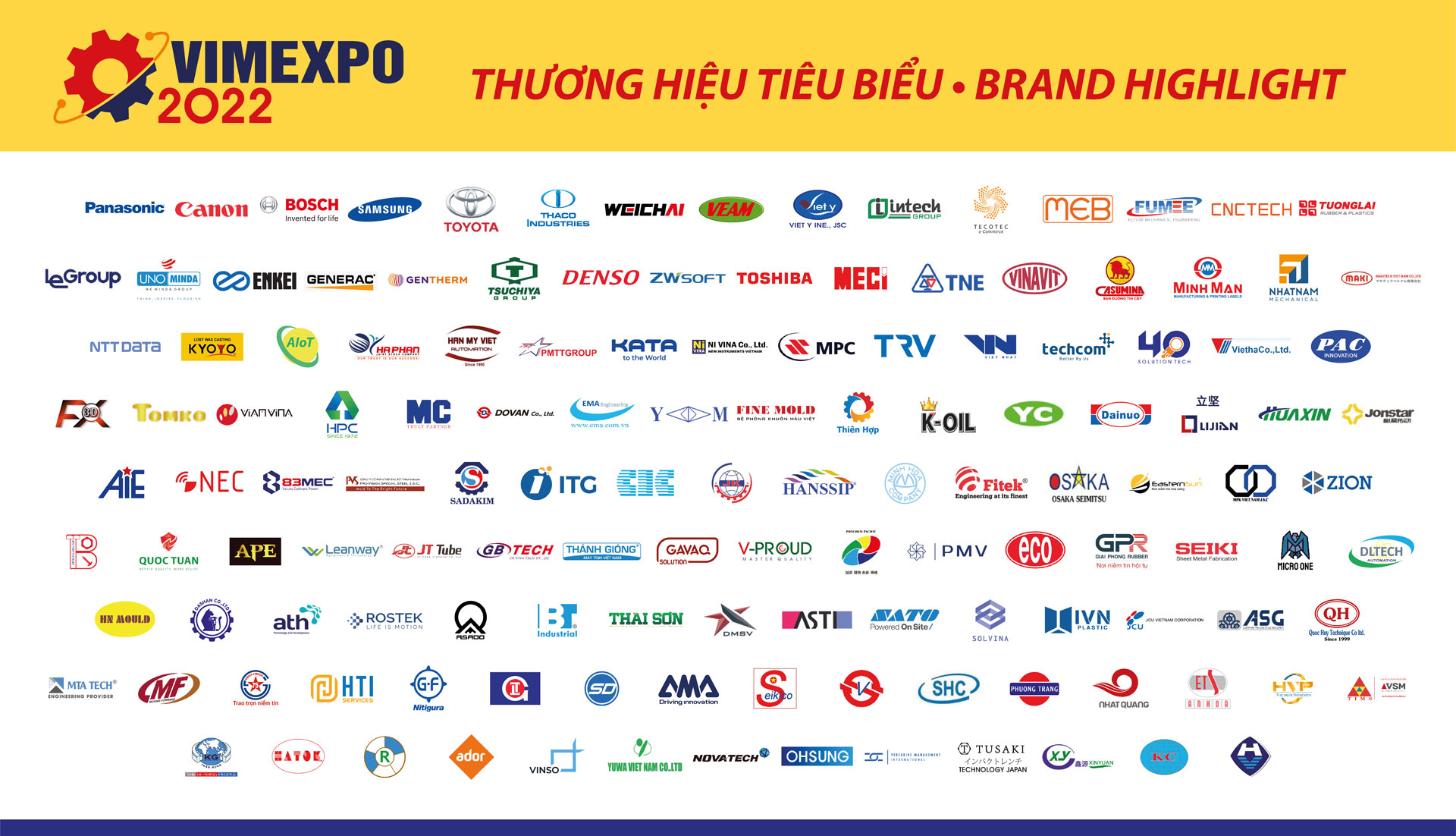With visionary participation in global value chains, Vietnam factories have steadily developed into principal manufacturers and exporters for high-demand products such as electronics, textiles, and in our case, planter solutions.
In fact, Vietnam ranked 12th in the world and third in ASEAN as an exporter for electronics in 2019. Even greater development has been estimated for 2022 and beyond.
The transformation of Vietnam manufacturing has squarely positioned Vietnam as a global manufacturing hub. Subsequently, this has spurned a revolution of factories relocating from China to Vietnam.
What value is waiting for you and your business in Vietnam? This article will reveal the exciting new frontier of global manufacturing in Vietnam..
Vietnam Manufacturers Are Growing Production
The benefits of Vietnam’s multilateral free trade agreements with most nations, as well as competitive labor costs, are major factors driving industry growth.
Alongside economic growth, Vietnam’s manufacturing sector is constantly improving its human resources and leveraging its capabilities to boost competitiveness.
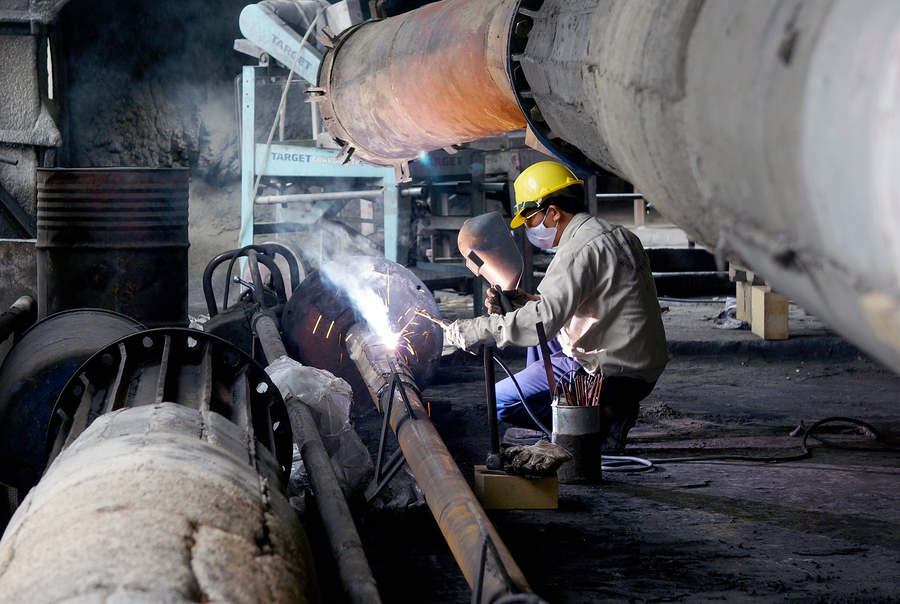
As global businesses focus on expansion, increasing supply chains tenacity, connectivity, and minimizing the risk of relying on a single country, Vietnam has entered the spotlight as being a safe and reliable country for international exports.
Among other industrial nations in Southeast Asia, Vietnam has surfaced as a prime destination for manufacturing expertise due to its production capabilities and benefits in shipping, lower labor costs, and production costs.
Manufacturing In Vietnam Is A Growing Trend
According to an IHS Markit report, Vietnam’s manufacturing purchasing managers’ index (PMI) grew to 52.2 in November from 52.1 in October, owing largely to government incentives. A score of 50 or higher indicates that manufacturing is expanding.
Foreign investment is also driving Vietnam’s industrial economy with a consistent 9.2% increase in investment value year on year.
The manufacturing and processing sectors received the majority of this cash influx with 18.1 billion USD in investment capital, or 58.2 percent of the total. It was followed by electricity production and distribution, real estate, wholesale and retail, according to the Foreign Investment Agency of Vietnam.
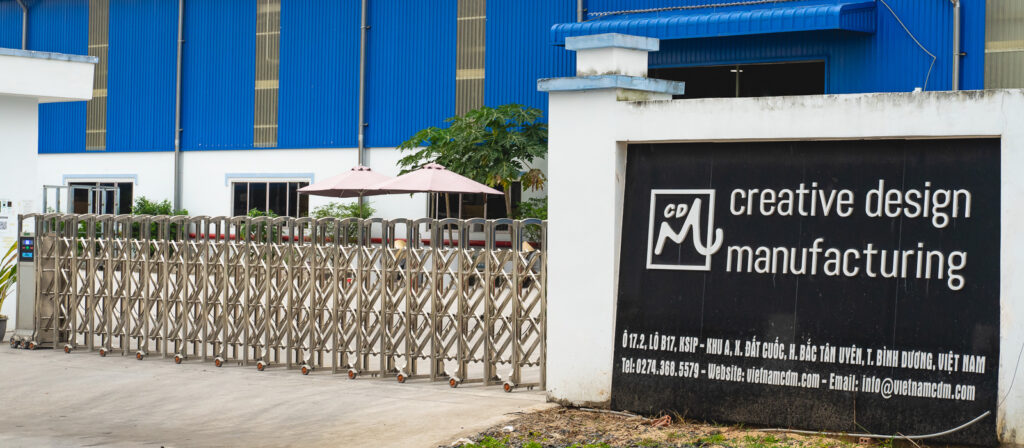
In fact, there are many examples of international investment reaching Vietnam manufacturing. For example, our company Vietnam Creative Design Manufacturing has expanded production to include two factories, numerous distributors, and a sizable and well-trained labor force all within the last few decades. Read more about us.
If you are wondering about moving manufacturing to Vietnam, these are good signs for you. Now, let’s look in detail at the benefits of manufacturing in Vietnam.
4 Reasons Why Vietnam’s Manufacturing Industry Are The Best Suppliers
The manufacturing industry is driven by a number of key factors. Running corporations in Vietnam offers increased advantages for foreign investors in a wide range of industries, particularly in light of the significant impact of the US-China trade war. Here are a few reasons why Vietnam is developing their manufacturing capabilities into a more sophisticated industry.
1. Vietnam Has A Skilful And Diverse Labour Force With Competitive Costs
The structure of Vietnam’s workforce has changed rapidly since Vietnam entered WTO in 2007. Almost 95% of the labour force is literate, and more than 88% attended secondary school, with 5% proficient in English and more than 10% considered highly skilled.
Another appealing bonus – the government has funded numerous specialized education and training programs in order to better equip the workforce. Workers and employers are increasingly able to offer superior service in their production capabilities.
Vietnam also promotes itself as a low-cost producer. Vietnam’s labour costs are currently half that of China’s, at US$2.99 (VND 68.000) per hour compared to US$6.50 (VND 148.000) per hour. This contributes to Vietnam’s position as a more cost-effective option to its surrounding neighbours.

2. Tax Exemptions To Encourage Manufacturing
The government recently issued Decree No. 57/2021/ND-CP (Decree 57), which assists Vietnamese factories in supplying raw materials, spare parts, and components to manufacturing industries such as electronics and mechanical engineering, garments and textiles, leather, and footwear, hi-tech industries, and the automotive industry.
The tax savings resulting from the implementation of the Decree will provide financial assistance to firms whose economic activities have been harmed by the epidemic. It will also strengthen the government’s credibility in modifying tax systems and laws, resulting in a more competitive economy in general in Vietnam.
According to Resolution No.115/NQ-CP issued in 2020, the government set a goal of enabling Vietnamese enterprises to manufacture items in supporting sectors with a high degree of competitiveness.
By 2025, the Vietnamese Government plans to have a manufacturing environment that will meet 45% of domestic production and consumption demands.
Furthermore, Vietnam has approved a number of tax incentives and exemptions for key sectors in the form of corporate income tax (CIT) for large investment initiatives with a capital of more than VND 6 trillion (US$264 million).
Incentives in high-tech zones, certain industrial zones, industrial parks and difficult socio-economic areas have been introduced to level-up productivity for export-oriented Vietnam manufacturers.
3. Ease Of Doing Business In Vietnam
On the World Bank’s metrics, Vietnam actually ranks higher than China in terms of ease of doing business, ranking 69th to China’s 46th. Vietnam was also one of 34 countries that improved the most on such metrics from 2018 to 2019, most notably in:
- Starting a business: By reducing the cost of starting a business and publishing incorporation notices online.
- Taxes: Eliminating the requirement to submit hard copies of value-added tax returns, as well as lowering employers’ contributions to the labour fund.
- Contract enforcement: Judgements given at all levels in commercial cases are published online.
4. Investment Opportunities From Vietnam’s Free Trade Agreements
Vietnam has been proactive in forging bilateral trade agreements with a variety of countries in recent years. Furthermore, as a member of the Association of Southeast Asian Nations (ASEAN), Vietnam has signed a number of free trade agreements (FTAs) with the regional trading bloc.
Vietnam’s economy is expected to shift away from low-tech manufactured goods and primary goods and toward more complex high-tech goods such as electrical components, necessary components, automobiles, and medical devices. These trade agreements will also ensure compliance with national standards ranging from employee rights to environmental protection.
Related article: Why You Should Get Made-In-Vietnam Fiberglass Planters
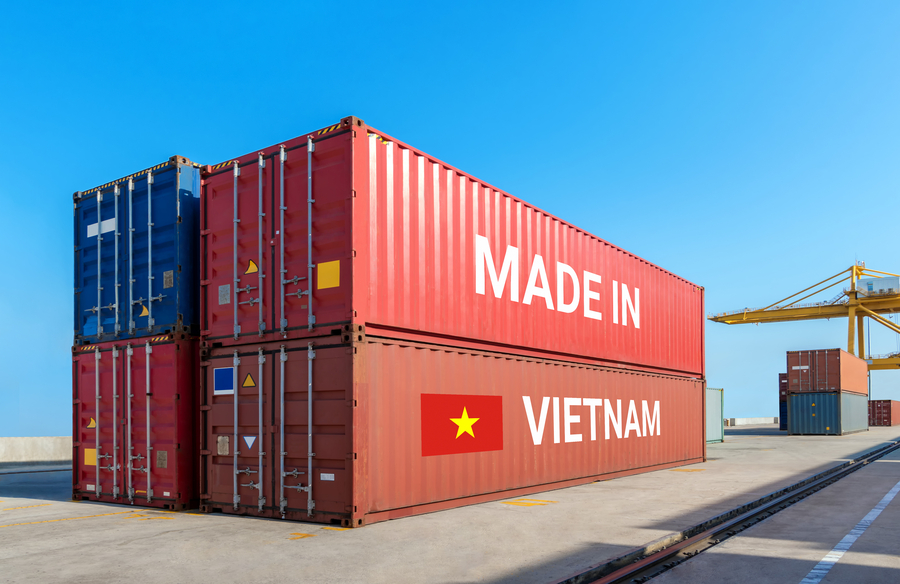
Manufacturing In Vietnam FAQs
What are the challenges and opportunities for Vietnamese manufacturers?
Local authorities are known to carefully review documentation, which adds time to lead times and planning permission clearances, especially for businesses that use outdated technology. As a result, complying with environmental regulations and land-use restrictions may become more complicated.
Companies should thoroughly research the local market, conduct due diligence, and seek assistance from a competent business or local partner before embarking on any project, such as building a sophisticated manufacturing plant.
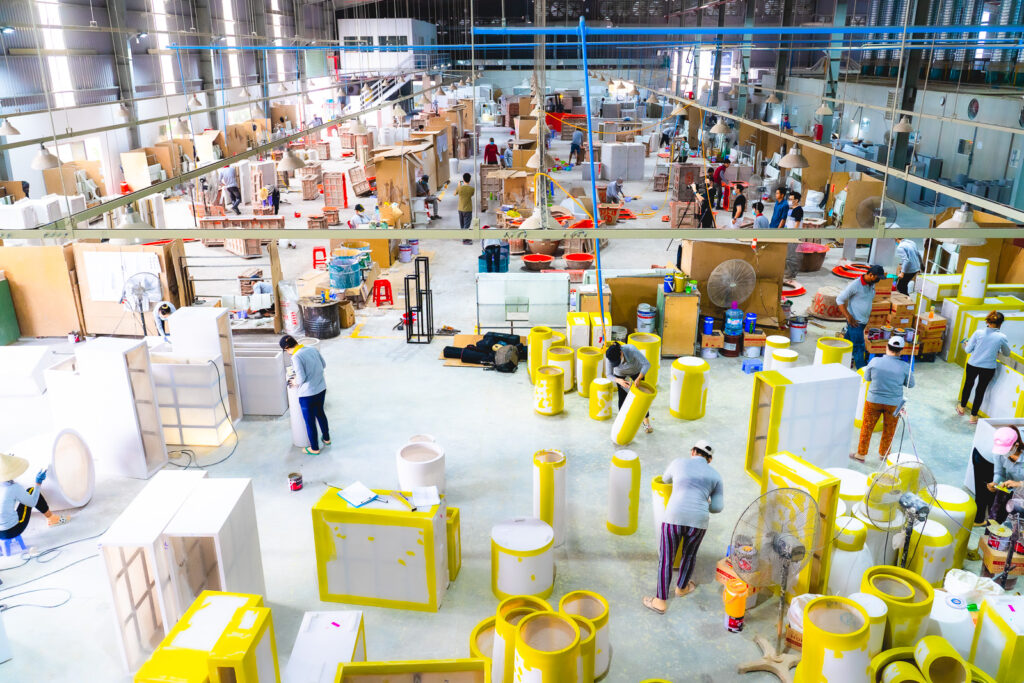
Where are the key locations for manufacturing?
Manufacturing is largely focused in four key economic regions (KERs) in Vietnam: the Northern, Central, Southern, and Mekong Delta. These regions attract a variety of manufacturing sectors and vary in terms of labour pools, industrial mix, and infrastructure.
- Northern KER FDI: Hanoi, Hai Phong, Quang Ninh, Vinh Phuc, Bac Ninh, Hai Duong, and Hung Yen are the seven cities and provinces that comprise the Northern KER. Northern KER FDI enterprises account for more than 80% of the region’s total exports.
- Central KER, which includes Da Nang City, Thua Thien-Hue, Quang Nam, Quang Ngai, and Binh Dinh, is appealing to the maritime and agricultural economies. Food, beverage, and feed processing are more specialized in this region than in the north and south. Da Nang has emerged in recent years as a center for seafood, food processing, information technology, and manufacturing.
- Southern KER: Binh Duong, Tay Ninh, Long An, Dong Nai, Ba Ria – Vinh Tau, and Ho Chi Minh City. These cities has a wider range of industries and services than the Northern KER. The garment and textile industries are located in the south, with Ho Chi Minh City serving as one of the country’s largest garment factories.
In our case, manufacturing in the South was ideal due to the ease of access to world-shipping routes, a talented labour pool, and a supply chain of premium raw materials.
Want a first-hand take on the state of business in Vietnam? Here’s what our logistics and production manager had to say!
The Final Words On Vietnam’s Manufacturing Industry
Finally, you should consider the following points when evaluating Vietnam as a potential location for relocating production and further investment:
- Lower labor costs may obscure equally important concerns, such as potentially lower quality and increased supplier risk. So it is advised to thoroughly research and communicate your expectations with your potential supplier.
- Will low costs compensate for any other potential relocation costs? What kind of financial investment will be needed to ensure a stable supply chain? Our advice is to partner with a well-established manufacturer (like ourselves) that has experience in global trade.
- Speak with your potential partners — manufacturers, quality control, or logistics providers regularly. They are experts in providing supply chain solutions and can help you with a number of different problems that arise from trans-national sourcing.
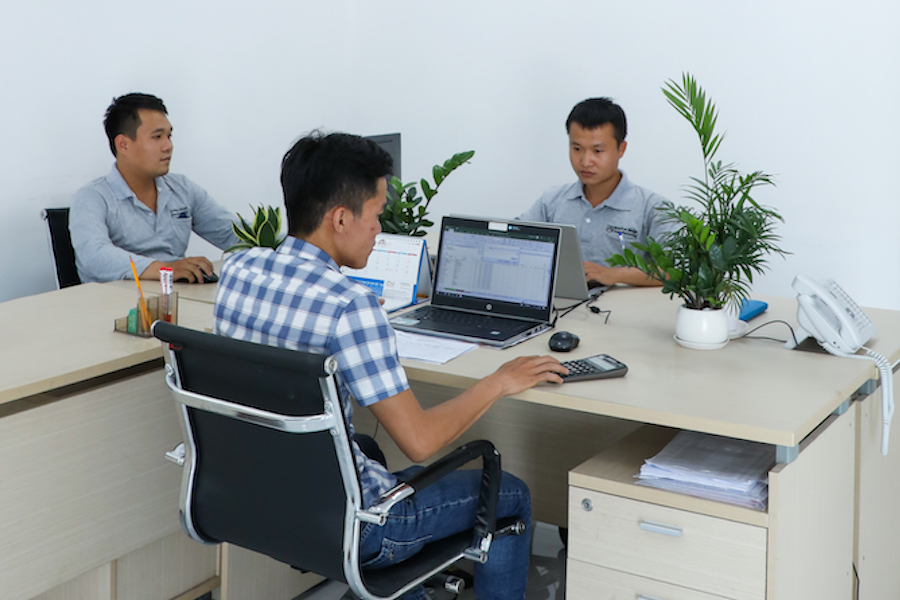 The knowledge of our sales consultants and engineers are just an email away.
The knowledge of our sales consultants and engineers are just an email away.Keep in mind that there will always be a cheaper place to manufacture your product. So, whatever competitive advantage you hope to gain from sourcing in Vietnam, keep our advice in mind. For more info and discussion related to doing business in Vietnam, check out our blog today!
If you are looking for a planter manufacturer in Vietnam, we are the best. Talk to our sales consultants today and we can help you solve your most difficult supply chain problems when buying planters!



